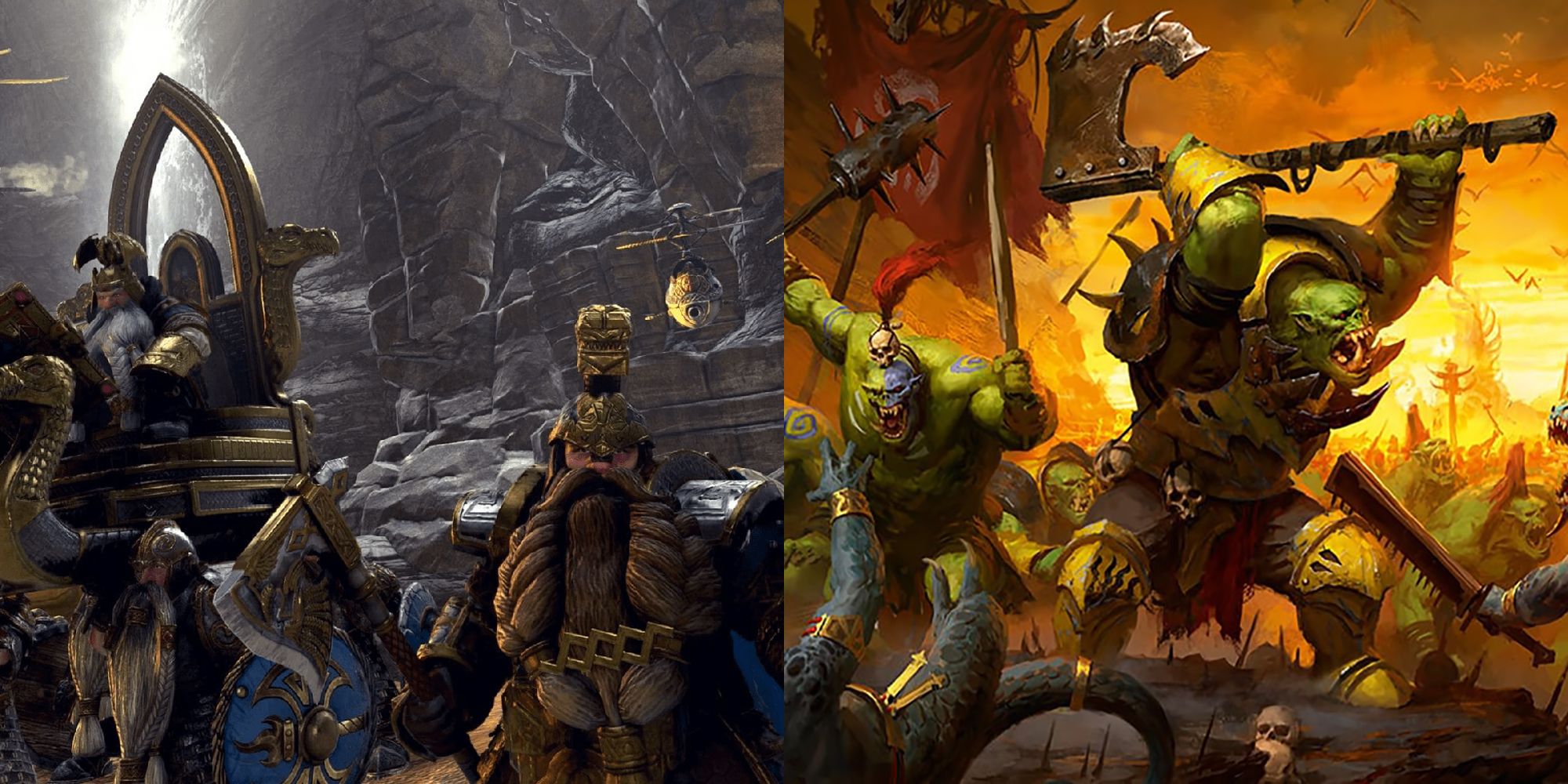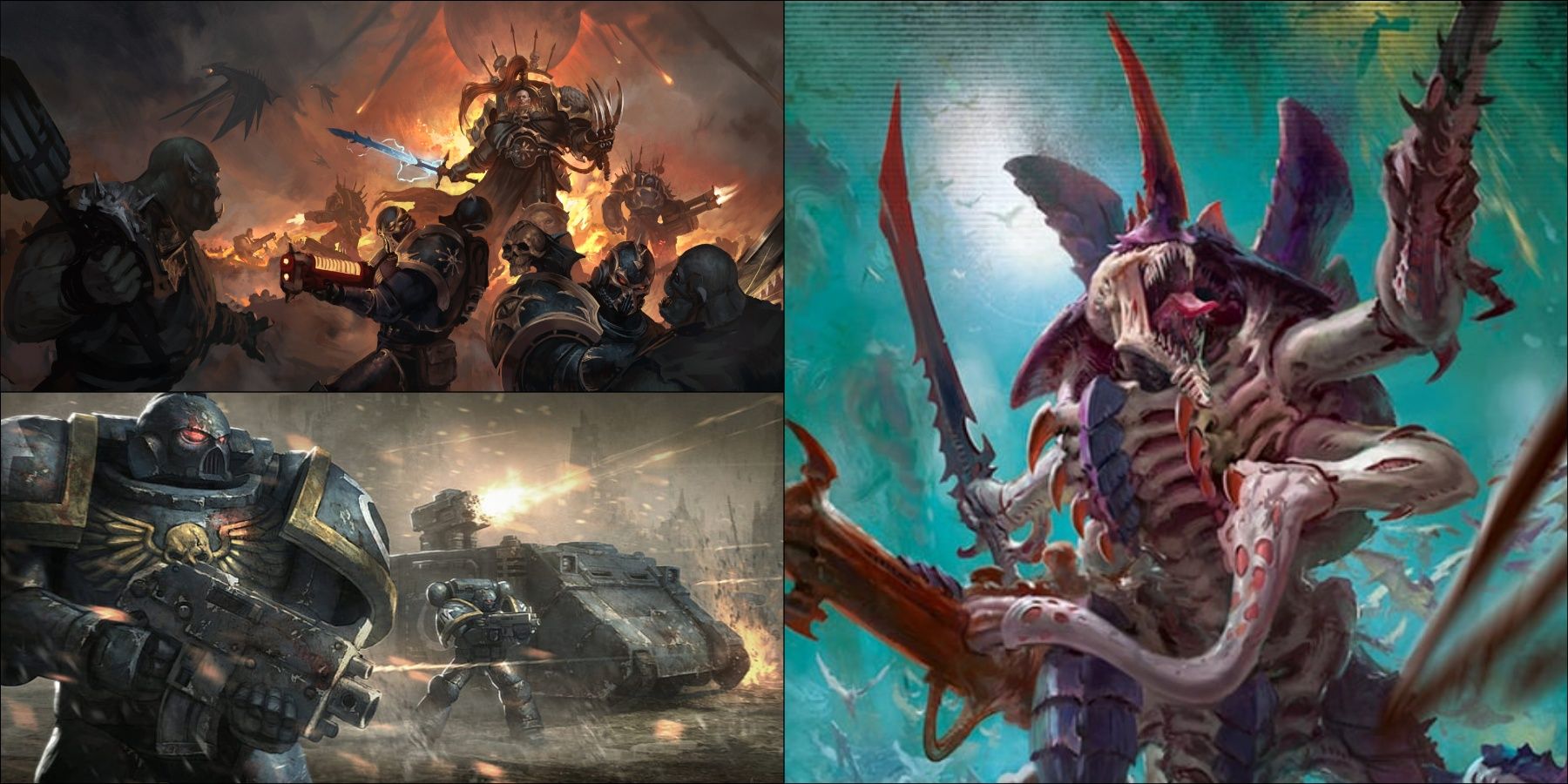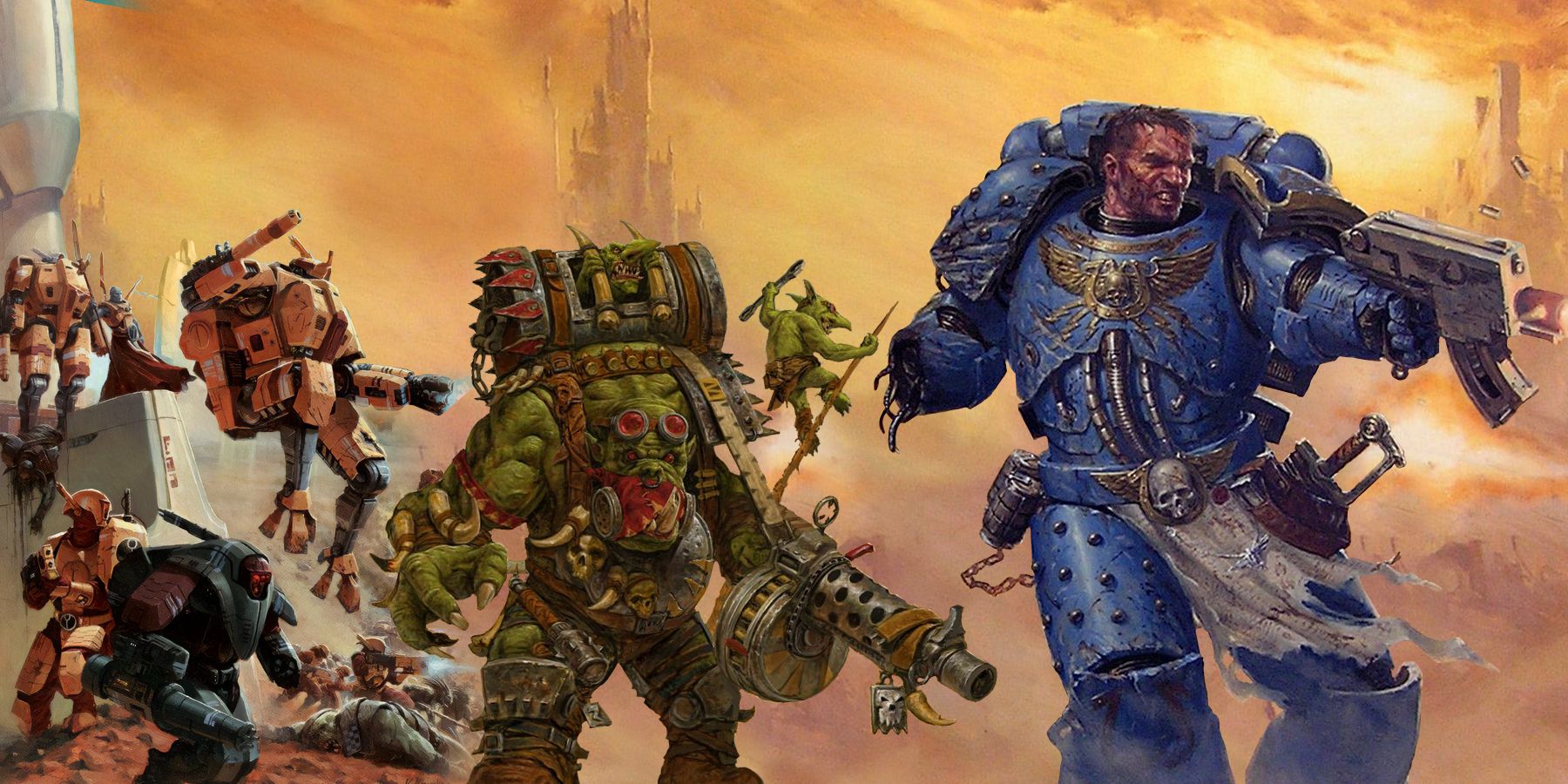Figuring out how many factions in Warhammer 40k exist can feel a little like trying to count all the stars in the night sky, you know? It's a vast universe, truly, and a very, very old one, with countless stories unfolding across its many, many planets. For anyone just starting out, or even for seasoned players who might be curious, the sheer number of distinct groups fighting for their corner of the galaxy can be pretty mind-boggling.
This tabletop game, Warhammer 40,000, offers a truly wide variety of armies and factions, which is great because it means there's almost certainly something that will appeal to any type of player out there. Whether you like disciplined soldiers, monstrous aliens, or maybe even corrupted warriors, this game has got you covered. It's a universe where space marines, chaos warriors, and all sorts of aliens clash in truly epic battles, a bit like a cosmic showdown that never really ends.
So, we're going to try and make things a little easier today, especially for beginners. We'll look at which Warhammer 40,000 armies are current, easy to pick up and play, and what kind of units and books you might find for them. It's all about making that first step into the grim darkness of the far future a less overwhelming one, you see, because there are quite a lot of choices.
Table of Contents
- Understanding the Galaxy's Major Players
- The Numbers Game: How Many Are There, Really?
- Picking Your First Army: For New Players
- Frequently Asked Questions About Warhammer 40k Factions
Understanding the Galaxy's Major Players
When you look at the Warhammer 40k factions, they're pretty much divided into three very broad categories, which helps to simplify things a little. These are the Imperium, Chaos, and the Xenos. This basic split really helps you grasp the main conflicts and the general feel of the different forces at play, which is quite helpful, actually.
Each of these big groups contains many, many smaller armies, each with its own style, its own story, and its own way of fighting battles. It's like having a big family, where everyone has their own personality, you know? Learning about these main categories is a good first step to getting a handle on the vastness of the Warhammer 40,000 setting.
The Imperium of Man: Humanity's Struggle
The Imperium of Man, well, it's humanity's vast, sprawling empire, struggling to survive in a very, very hostile galaxy. These factions, they typically focus on things like defense, discipline, and just incredible firepower. They are, in a way, the good guys, or at least they see themselves that way, trying to hold back the darkness.
Within the Imperium, you'll find a whole host of different armies, each with its own flavor. There are, for instance, the mighty Space Marines, who are, you know, genetically engineered super-soldiers, each chapter with its own traditions and fighting style. The Space Wolves, for example, are ferocious warriors from the death world of Fenris; they are dauntless, tenacious, and possess a rather wild spirit, very different from other Space Marine chapters. You can learn more about Space Marines on our site, actually.
Beyond the Space Marines, the Imperium also fields the vast armies of the Astra Militarum, sometimes called the Imperial Guard, which are just regular human soldiers, but in absolutely massive numbers. Then there are the Adeptus Mechanicus, who are like tech-priests with a very, very religious devotion to machines, and the zealous Sisters of Battle, who fight with faith and fire. It's quite a diverse collection of forces, all fighting for one cause, in a way.
The Warhammer 40k Chaos Factions: Corruption Unleashed
Then we have the Warhammer 40k Chaos factions, and these are, frankly, the stuff of nightmares for the Imperium. They represent the corrupting influence of the Warp, which is a kind of alternate dimension of pure psychic energy and emotion. These armies are often twisted versions of imperial forces or just monstrous entities driven by dark gods, and they truly show a world where chaos warriors fight with very, very dark powers.
The main Chaos factions are often tied to the four Chaos Gods: Khorne, Nurgle, Tzeentch, and Slaanesh, each representing different aspects of malevolence. You've got the Chaos Space Marines, who are fallen versions of the Imperium's greatest warriors, now serving dark masters. They're a bit like a twisted reflection, if you think about it.
There are also the Daemons of Chaos, who are literal manifestations of the Chaos Gods' will, and they are just terrifying to behold. These armies tend to be very aggressive, very destructive, and they play in a way that is quite different from the disciplined Imperium, focusing more on raw power and unsettling tactics. It's a very distinct style of play, for sure.
The Xenos: Alien Threats and Mysteries
Finally, there are the Xenos, which is the catch-all term for all the alien races in the Warhammer 40,000 universe. This category, too, is incredibly varied, featuring species that range from highly advanced civilizations to utterly savage beasts. They are, in a way, the wild cards of the galaxy, each with their own goals and their own unique ways of waging war.
Some of the more well-known Xenos factions include the Orks, who are just incredibly numerous and love nothing more than a good fight, shouting "WAAAGH!" as they charge into battle. Then there are the Eldar, an ancient and very, very psychic race, remnants of a fallen empire, who fight with grace and powerful technology. They are quite elegant, actually.
You also have the Tyranids, who are a terrifying, insectoid hive fleet that consumes all life in its path, just like a swarm of locusts on a cosmic scale. The Necrons are ancient, robotic beings who have awoken from long slumber, wielding devastating energy weapons. And there are the T'au Empire, a relatively young but technologically advanced race that seeks to unite the galaxy under their "Greater Good," which is, you know, a bit idealistic in this grim setting. Each Xenos army offers a truly unique play experience, very much so.
The Numbers Game: How Many Are There, Really?
This is often the big question, isn't it? "How many factions and races are there in Warhammer 40k?" And honestly, it can be a bit tricky to give one single, clear answer because the number depends on how you count them, you know? The meaning of "many" itself is consisting of or amounting to a large but indefinite number, so it's not always a precise figure.
Some sources might say one thing, and others something slightly different, which can be a bit confusing for someone looking at 40k for the first time. There isn't always consistency or a clear answer when you look it up, which is kind of the nature of a universe that's been growing for decades. It's like trying to count all the different types of fish in the ocean, more or less.
Based on what we know, in total, there are over 35 different playable factions if you count all the major armies and their distinct sub-factions. That's a lot of choices, isn't it? These factions, too, show a world where space marines, chaos warriors, and aliens fight in ways that are just incredibly diverse.
More specifically, it's often said that there are over 20 main armies. These are the big ones, the ones that consistently get new models and rules. Beyond those 20 main armies, there are also about 13 offshoot races or factions, and then countless subgroups and smaller armies scattered across the galaxy. So, while you might hear "~26 Warhammer 40k armies" as a general number to choose from, that's just a part of the bigger picture, really.
It's like, when someone got into the game back in 2006, there were still many choices, but the universe has just kept expanding. This category, you see, contains all of the major factions of the Warhammer 40,000 universe, not counting other Warhammer settings like Age of Sigmar, which have their own sets of factions. We're just focusing on 40k here, which is, you know, quite enough to think about.
Picking Your First Army: For New Players
With so many choices, picking your first army can feel like a really big decision, almost overwhelming. It's like, where do you even start, right? We want to make it easier for beginners to figure out which Warhammer 40,000 armies are up to date, easy to pick up and play, and what units and books are available for them. This is a common concern, as a matter of fact.
A good starting point is often to pick an army based on what looks cool to you, or what kind of playstyle you imagine enjoying. Do you like the idea of disciplined shooting lines? Maybe the Imperial Guard. Do you prefer monstrous close combat? Orks or Tyranids could be for you. It's very much about what sparks your interest visually and thematically, you know.
For beginners, some armies tend to be a little more straightforward to learn. Space Marines, for instance, are often recommended because their rules are pretty clear, and they have a good balance of different unit types. Similarly, Necrons are often considered quite robust and forgiving for new players, offering a very solid starting point, too. It really just depends on your personal preference, in a way.
Remember, the hobby is also about building and painting your models, so picking an army you genuinely like the look of will make that part of the experience much more enjoyable. There are many, many resources available, from online guides to local game stores, that can help you take those first steps. It's a very welcoming community, generally speaking.
Frequently Asked Questions About Warhammer 40k Factions
People often have a few common questions when they start looking into Warhammer 40k factions, and we've gathered some of the most frequent ones here to help clear things up, as a matter of fact.
Are all Warhammer 40k factions playable?
Well, pretty much all the major and offshoot factions in Warhammer 40k have playable armies with their own rules and model ranges. While there are countless subgroups and tiny armies scattered across the lore, the ones you'll see on the tabletop are the ones with official releases. So, yes, the vast majority of what you hear about, you can play, which is quite nice.
What is the difference between a "faction" and a "race" in Warhammer 40k?
It's a good question, and the terms are sometimes used a bit interchangeably, you know? Generally, "race" refers to a distinct species, like Orks or Eldar. A "faction," on the other hand, can be a specific army or organization within a race, or even a collection of different races united by a common cause, like the Imperium of Man, which includes many human sub-factions. So, a race is a type of being, and a faction is a group or army, you could say.
Which Warhammer 40k faction is best for beginners?
For beginners, armies like the Space Marines or Necrons are often suggested. They tend to have simpler rules, good starter sets, and a pretty straightforward playstyle. Space Marines, for instance, are very iconic and offer a solid all-around experience. Necrons are known for being quite durable, which can be forgiving for new players learning the ropes, you know? It really comes down to personal taste, though, and what you find appealing.



